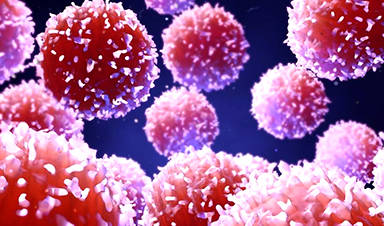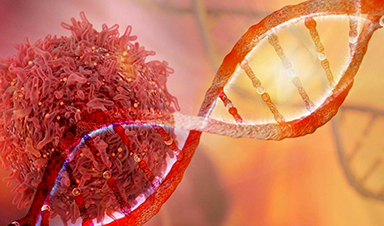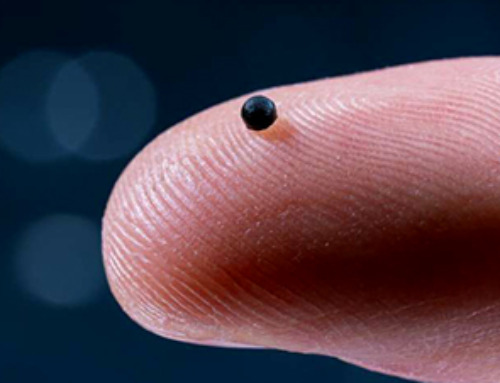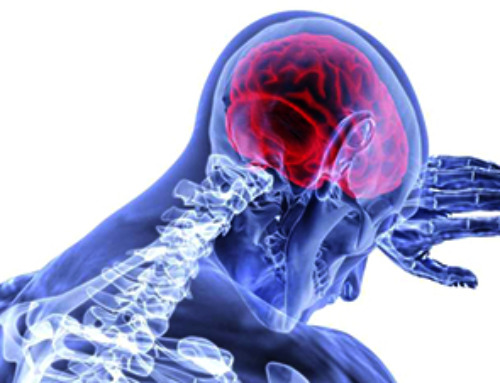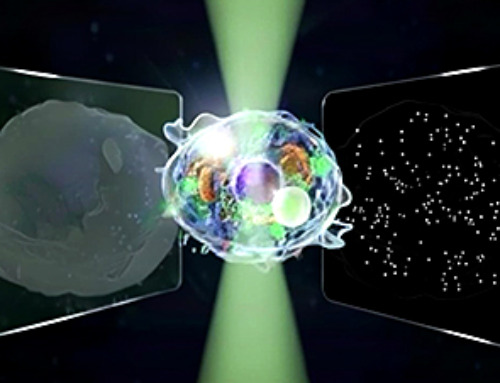Scientists have recently developed multifunctional hexagonal NaxWO3 nanocrystals that can serve as microwave sensitizers to kill cancer cells as well as improve the overall chemodynamic therapy (CDT). This study is available as a pre-proof in Chemical Engineering Journal.
Technologies Associated with Clinical Management of Tumors
Some of the thermal ablation technologies, such as radiofrequency ablation (RFA) and microwave ablation (MWA), have been popularly used for the clinical management of tumors. Compared to conventional therapies, thermal ablation therapies involve minimal invasion, shorter duration of hospitalization, lower mortality rate and reduced cost of therapy.
Over the years, MWA has become an alternative method to RFA, because of its higher heating efficiency, deep penetration and, large ablation area. MWA is based on hyperthermia, i.e., above 60℃, which can cause denaturation of protein and, thereby, cause irreversible cellular injury. Importantly, researchers observed that MWA therapy was effective against primary or metastatic tumors associated with lung cancer, liver cancer and breast cancer.
Two of the key limitations of MWA therapy include uneven distribution of heat and quick diffusion; these lead to damaging both malignant as well as surrounding healthy tissues. To overcome this drawback, scientists have developed various microwave sensitizers that can transform microwave electromagnetic energy into thermal energy and accumulate maximum heat at the target site.
Chemodynamic therapy (CDT) is an emerging anticancer therapy based on a Fenton/Fenton-like reaction that produces highly oxidative hydroxyl radicals in cancer cells. However, the development of CDT as a sole cancer treatment has not been possible due to some limitations, such as insufficient catalytic efficiency and unfavorable reaction conditions. Scientists stated that enhancement of temperature could be an effective strategy to improve Fenton/Fenton-like reactions. To date, all the approaches have been based on a photothermal enhancement of CDT, providing an unfavorable low penetration rate for clinical application.
Potential of Hexagonal Tungsten Oxide Nanomaterials for Cancer Therapy
Nanomaterials of tungsten oxide and tungsten bronzes are known to be less toxic, possess many unique properties, and are multifarious crystal structures. Scientists were curious to explore its potential for microwave heating due to some characteristic features of hexagonal tungsten oxide nanomaterials, e.g., large surface area, ions intercalation ability, and tunneled structure. Additionally, the introduction of cations into tungsten oxide makes it a favorable candidate for CDT.
Scientists believe that the combination of CDT and MWA could be an efficient cancer treatment strategy. Keeping this in mind, researchers of the current study thought that exploring flexible redox states of the W element (W5+/W6+) could be ideal for developing a novel W-based nanocrystal required for synergistic antitumor therapy.
In this study, researchers developed hexagonal phase NaxWO3 nanocrystals via hydrothermal processes. These nanocrystals were analyzed for their efficiency as microwave sensitizers as well as a nano-catalyst for microwave thermal-enhanced CDT.
Scientists characterized the newly developed NaxWO3 nanocrystals via scanning electron microscope (SEM), which revealed the presence of rod-shaped nanostructures of 100-150 nm length and 100-150 nm diameter. Researchers observed that cationic ions could readily occupy these hexagonal tunneled nanostructures, which hinted at its potential as a microwave thermal sensitizer. Additionally, the incorporation of polyvinylpyrrolidone (PVP) on the surface of NaxWO3 nanostructures was confirmed via FT-IR analysis. In this study, researchers revealed that PVP-modified NaxWO3 nanorods possessed significant biocompatibility and dispersibility.
Scientists reported that both in vitro and in vivo studies revealed that newly synthesized NaxWO3 nanocrystals exhibited promising thermal effects when subjected to microwave irradiation. This might be due to its tunneled structure and ions intercalation properties that promote the trapping of more ions/polar molecules vibrating in a confined space. Additionally, the flexibly reversible redox nature of W elements allows NaxWO3 nanocrystals to degrade endogenous H2O2 into highly active hydroxyl radical through a Fenton-like reaction. Subsequently, via the redox process, NaxWO3 nanocrystals can also consume the reduced substances, i.e., glutathione (GSH).
Importantly, the high concentration of hydroxyl radical and low level of GSH in the malignant cells, instead of healthy tissues, facilitate selective inhibition of tumor cells via mitochondrial dysfunction, elicited by reactive oxygen species (ROS). Another advantage of this approach has been the application of hyperthermia associated with MWA, which can not only trigger coagulative necrosis in malignant cells but also enhance ROS generation by increasing the catalytic efficiency of NaxWO3 nanocrystals via a Fenton-like reaction.
In this study, researchers also studied the efficacy of NaxWO3 nanocrystals in killing cancer cells using 4T1 cells and HUVEC cells. This study showed that an increase in the concentration of NaxWO3 nanocrystals enhanced cytotoxicity on 4T1 cells, and decreased its viability by 67.8%. This result implies the potential of NaxWO3 nanocrystals in inhibiting the growth of cancer cells without affecting healthy cells (HUVEC cells).
Conclusion
The authors of this study stated that the newly synthesized NaxWO3 nanocrystals, with promising microwave heating ability, improved catalytic performance, and biocompatibility could be effectively applied for antitumor therapy.
News
Magnetic nanoparticles that successfully navigate complex blood vessels may be ready for clinical trials
Every year, 12 million people worldwide suffer a stroke; many die or are permanently impaired. Currently, drugs are administered to dissolve the thrombus that blocks the blood vessel. These drugs spread throughout the entire [...]
Reviving Exhausted T Cells Sparks Powerful Cancer Tumor Elimination
Scientists have discovered how tumors secretly drain the energy from T cells—the immune system’s main cancer fighters—and how blocking that process can bring them back to life. The team found that cancer cells use [...]
Very low LDL-cholesterol correlates to fewer heart problems after stroke
Brigham and Women's Hospital's TIMI Study Group reports that in patients with prior ischemic stroke, very low achieved LDL-cholesterol correlated with fewer major adverse cardiovascular events and fewer recurrent strokes, without an apparent increase [...]
“Great Unified Microscope” Reveals Hidden Micro and Nano Worlds Inside Living Cells
University of Tokyo researchers have created a powerful new microscope that captures both forward- and back-scattered light at once, letting scientists see everything from large cell structures to tiny nanoscale particles in a single shot. Researchers [...]
Breakthrough Alzheimer’s Drug Has a Hidden Problem
Researchers in Japan found that although the Alzheimer’s drug lecanemab successfully removes amyloid plaques from the brain, it does not restore the brain’s waste-clearing system within the first few months of treatment. The study suggests that [...]
Concerning New Research Reveals Colon Cancer Is Skyrocketing in Adults Under 50
Colorectal cancer is striking younger adults at alarming rates, driven by lifestyle and genetic factors. Colorectal cancer (CRC) develops when abnormal cells grow uncontrollably in the colon or rectum, forming tumors that can eventually [...]
Scientists Discover a Natural, Non-Addictive Way To Block Pain That Could Replace Opioids
Scientists have discovered that the body can naturally dull pain through its own localized “benzodiazepine-like” peptides. A groundbreaking study led by a University of Leeds scientist has unveiled new insights into how the body manages pain, [...]
GLP-1 Drugs Like Ozempic Work, but New Research Reveals a Major Catch
Three new Cochrane reviews find evidence that GLP-1 drugs lead to clinically meaningful weight loss, though industry-funded studies raise concerns. Three new reviews from Cochrane have found that GLP-1 medications can lead to significant [...]
How a Palm-Sized Laser Could Change Medicine and Manufacturing
Researchers have developed an innovative and versatile system designed for a new generation of short-pulse lasers. Lasers that produce extremely short bursts of light are known for their remarkable precision, making them indispensable tools [...]
New nanoparticles stimulate the immune system to attack ovarian tumors
Cancer immunotherapy, which uses drugs that stimulate the body’s immune cells to attack tumors, is a promising approach to treating many types of cancer. However, it doesn’t work well for some tumors, including ovarian [...]
New Drug Kills Cancer 20,000x More Effectively With No Detectable Side Effects
By restructuring a common chemotherapy drug, scientists increased its potency by 20,000 times. In a significant step forward for cancer therapy, researchers at Northwestern University have redesigned the molecular structure of a well-known chemotherapy drug, greatly [...]
Lipid nanoparticles discovered that can deliver mRNA directly into heart muscle cells
Cardiovascular disease continues to be the leading cause of death worldwide. But advances in heart-failure therapeutics have stalled, largely due to the difficulty of delivering treatments at the cellular level. Now, a UC Berkeley-led [...]
The basic mechanisms of visual attention emerged over 500 million years ago, study suggests
The brain does not need its sophisticated cortex to interpret the visual world. A new study published in PLOS Biology demonstrates that a much older structure, the superior colliculus, contains the necessary circuitry to perform the [...]
AI Is Overheating. This New Technology Could Be the Fix
Engineers have developed a passive evaporative cooling membrane that dramatically improves heat removal for electronics and data centers Engineers at the University of California San Diego have created an innovative cooling system designed to greatly enhance [...]
New nanomedicine wipes out leukemia in animal study
In a promising advance for cancer treatment, Northwestern University scientists have re-engineered the molecular structure of a common chemotherapy drug, making it dramatically more soluble and effective and less toxic. In the new study, [...]
Mystery Solved: Scientists Find Cause for Unexplained, Deadly Diseases
A study reveals that a protein called RPA is essential for maintaining chromosome stability by stimulating telomerase. New findings from the University of Wisconsin-Madison suggest that problems with a key protein that helps preserve chromosome stability [...]
